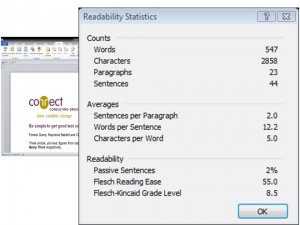 Forrest Gump, Raymond Babbitt and Chauncey Gardiner.
Forrest Gump, Raymond Babbitt and Chauncey Gardiner.
Three simple, yet wise, figures from classic American movies—Forrest Gump, Rain Man and Being There respectively.
When Forrest, Ray and Chauncey speak, other characters and the audience members listen.
These three men get across their points directly using short words, uncomplicated structures and minimal flourishes. They’re clear, easy to understand and follow. They are simple—yet also simplistic—movie characters.
Simplistic is out of place for our VUCA world (volatile, uncertain, complex and ambiguous). We can’t afford to dumb down conversations and be naïve about big issues with so much change and complexity swirling around us.
But is it bad to be simple?
Some think so, judging by the recent headline from the Sunlight Foundation about its analysis of the Congressional Record.
The headline: Is Congress getting dumber, or just more plainspoken?
According to the analysis, Congress now speaks a full grade level lower (10.6) than it did seven years ago (11.5).
By comparison, the Sunlight Foundation reported that two foundational US documents are at much higher grade levels. The Constitution is at a 17.8 grade level. The Declaration of Independence is at a 15.1 grade level.
As for important US speeches, Lincoln’s Gettysburg Address is at an 11.2 grade level and Martin Luther King’s “I Have a Dream” speech is at a 9.4 grade level.
Of all of these, only the “I Have a Dream” speech is in sync with the average American, who reads between the 8th and 9th grade level.
Should we embrace simple, direct speaking and writing?
Yes!
When we’re clear, we show respect for others. We communicate directly, rather than over peoples’ heads.
By using simpler language, we also are more considerate of highly-educated individuals, including those who speak English as a second language. These individuals have other things to do than spend valuable time deciphering what we’re saying. Do we want them to work at understanding us or doing their job?
Sophisticated speakers and writers who enjoy using complicated sentence structures and intricate language still have a valuable place in society. However, they can make their mark and contributions in venues other than our day-to-day workplace.
In the workplace, clarity should rule, as explained in 3 tips for leading with clarity.
To be clearer and simpler, test yourself. Start by checking your writing.
Use the Flesch-Kincaid readability tests, which are built into Microsoft Word. (You need to turn them on as they are not the default way to work. If you’re using Word 2010, go into options. Select proofing and click “show readability statistics.”) Any time you review your documents for spelling and grammar, you’ll see the readability statistics. As you can see in the graphic, this blog post has an 8.5 reading level.
Your goal is to get a high reading ease and low grade level. (Longer words and longer sentences contribute to higher grade levels.) These tests aren’t perfect; however, they’re better than nothing.
For example, some of my clients were writing at the 14.5 grade level before we started working together. The documents I wrote for them averaged the 10th grade. Over time, my clients simplified their documents. And as a result, they started getting better responses and compliance for their calls to action. This improved the implementation of their change initiatives as well as improved operations and morale.
So start testing today! And to quote Forrest Gump, “That’s all I have to say about that.”
What do you say?

0 Comments